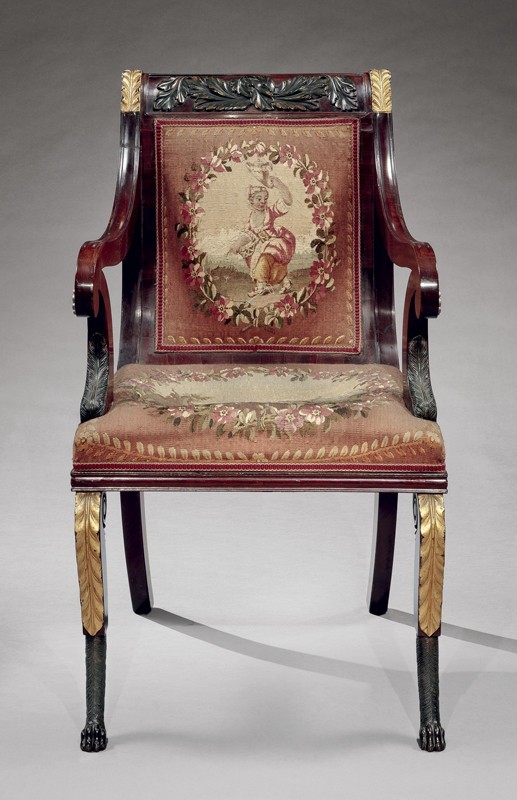
John Banks, armchair, New York City, 1819. Mahogany with ash and white pine. H. 37 3/4", W. 21 1/2", D. 27 3/4". (Courtesy, Bernard and S. Dean Levy, Inc.; photo, Richard Goodbody.) The letter designations provided for some of the seating illustrated here are derived from accession numbers assigned by the New-York Historical Society. This armchair is “H”.
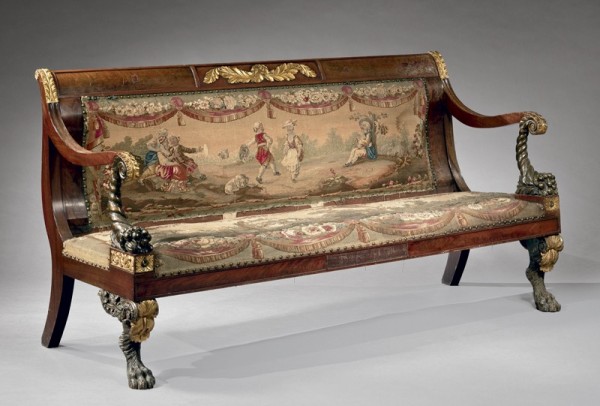
John Banks, sofa, New York City, 1819. Mahogany with cherry, ash, and white pine. H. 38 1/2", W. 72", D. 27". (Courtesy, Bernard and S. Dean Levy, Inc.; photo, Richard Goodbody.)

John Banks, armchair, New York City, 1819. Mahogany with cherry, ash, maple, and white pine. H. 37 3/4", W. 21 1/2", D. 27 3/4".(Courtesy, Bernard and S. Dean Levy, Inc.; photo, Richard Goodbody.) This is armchair “K”.
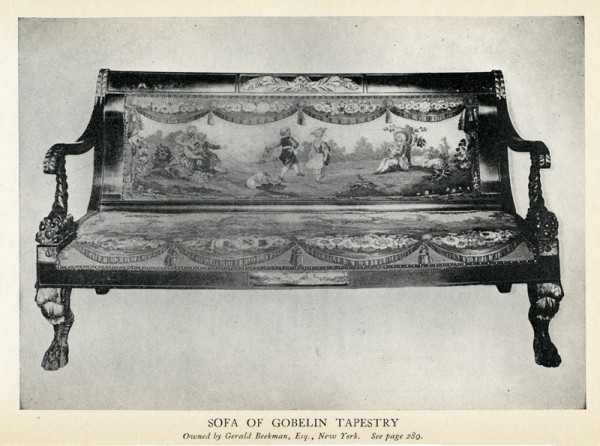
Frontispiece to Esther Singleton, The Furniture of Our Forefathers, pt. 4, (New York: Doubleday, Page, August 1901).

Abram Hosier, “Mount Pleasant,” New York City, ca. 1874. Watercolor, gouache, and graphite on paper. 30" x 40". (Courtesy, New-York Historical Society, gift of the Beekman Family Association.)
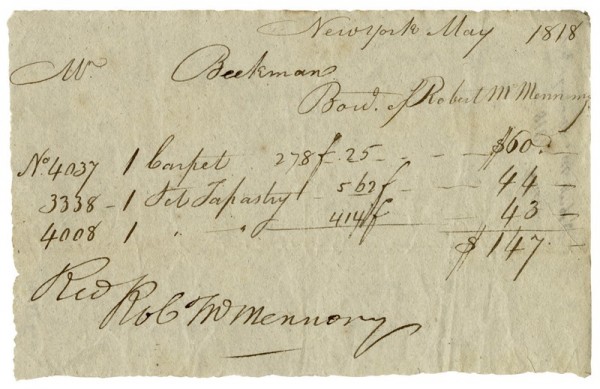
Robert McMennomy to James Beekman, invoice for tapestry sets, May 1818. (Courtesy, New-York Historical Society.)

John Banks to James Beekman, invoice for a set of eight armchairs and one sofa, June 26, 1819. (Courtesy, New-York Historical Society.)

Thomas Seymour, Grecian card table (one of a pair), Boston, 1816. Mahogany. H. 30 1/8", W. 36 1/4", D. 18". (Courtesy, Adams National Historic Site; photo, David Bohl.)
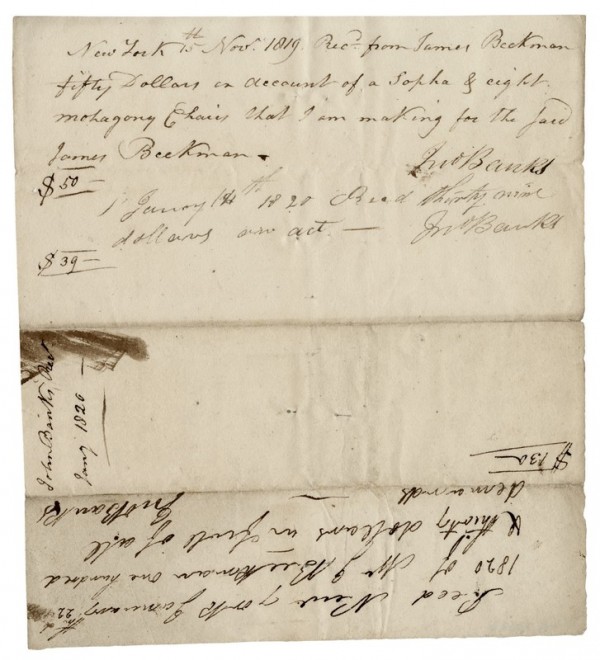
John Banks to James Beekman, accounting for a set of eight armchairs and one sofa, November 15, 1819. (Courtesy, New-York Historical Society.)

John Banks, tall case clock, New York City, 1820–1826. Mahogany, light and dark wood inlays and stringing with tulip poplar. H. 96", W. 21 1/2", D. 11 1/4". (Courtesy, Sotheby’s.)
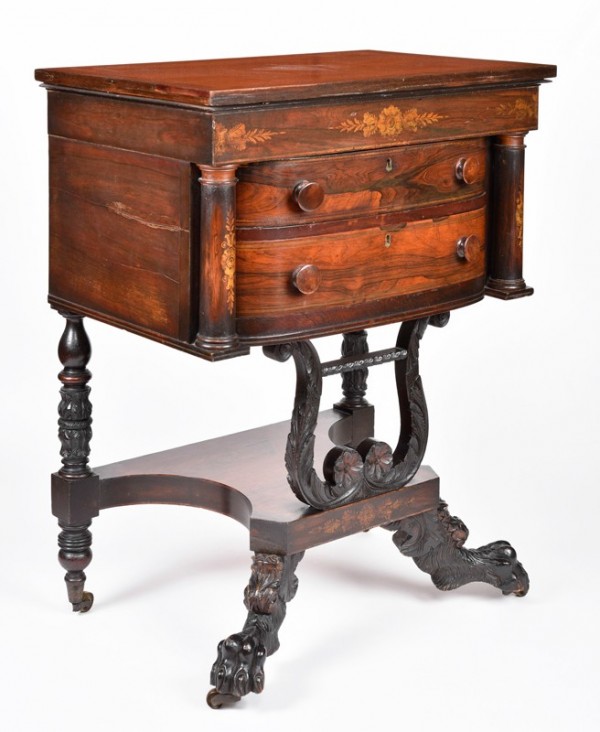
John Banks, work table, New York City, ca. 1824. Mahogany, rosewood, and walnut with tulip poplar and white pine. H. 31 1/2", W. 24 3/4", D. 20 3/4". (Courtesy, Winterthur Museum; photo, Laszlo Bodo.)
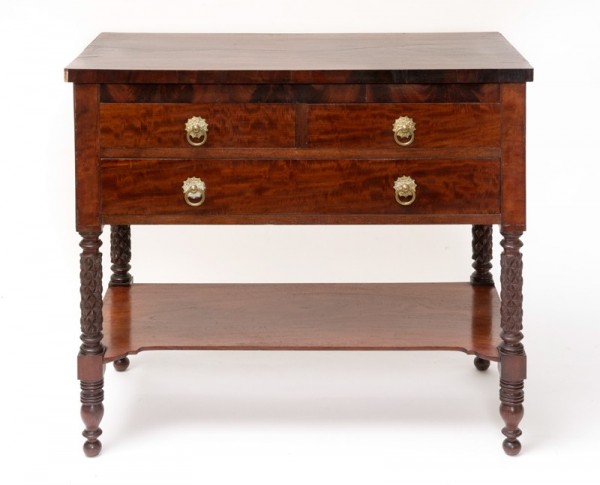
John Banks , serving table, New York City, 1820–1826. Mahogany with tulip poplar and white pine. H. 33 1/4", W. 36 1/4", D. 18". (Courtesy, Locust Lawn.)
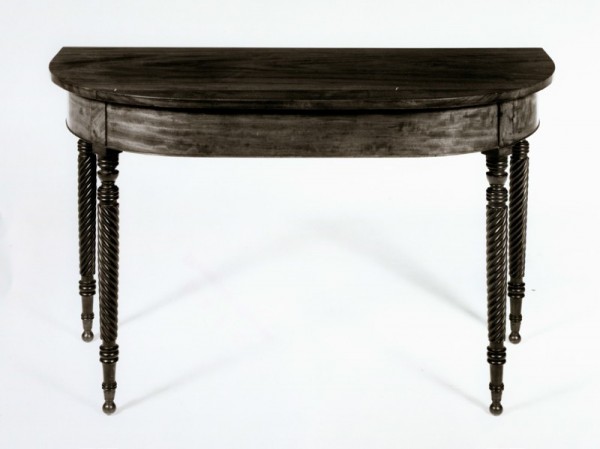
John Banks, dining table section (one of a pair), New York City, 1820–1826. Mahogany. H. 28 1/4", W. 46", D. 21". (Courtesy, Decorative Arts Photographic Collection, Winterthur Museum.)
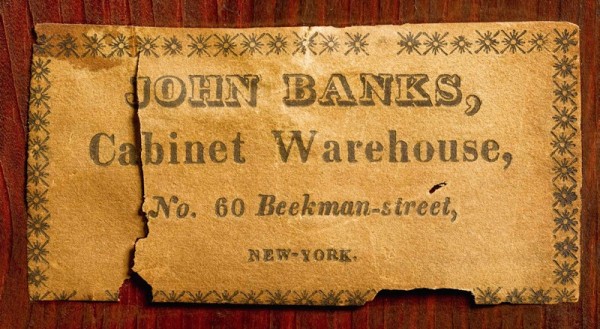
Printed label of John Banks on the tall case clock illustrated in fig. 10.
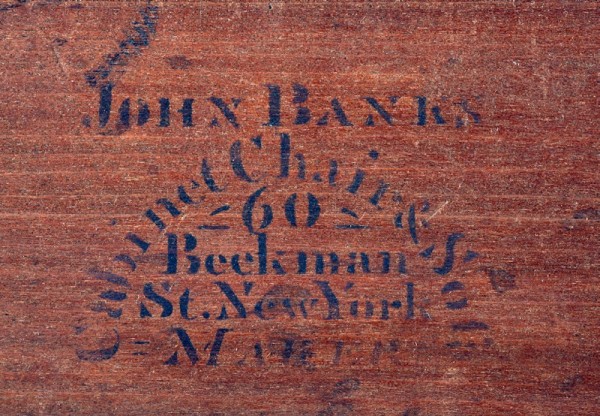
Stenciled label of John Banks on the work table illustrated in fig. 11.
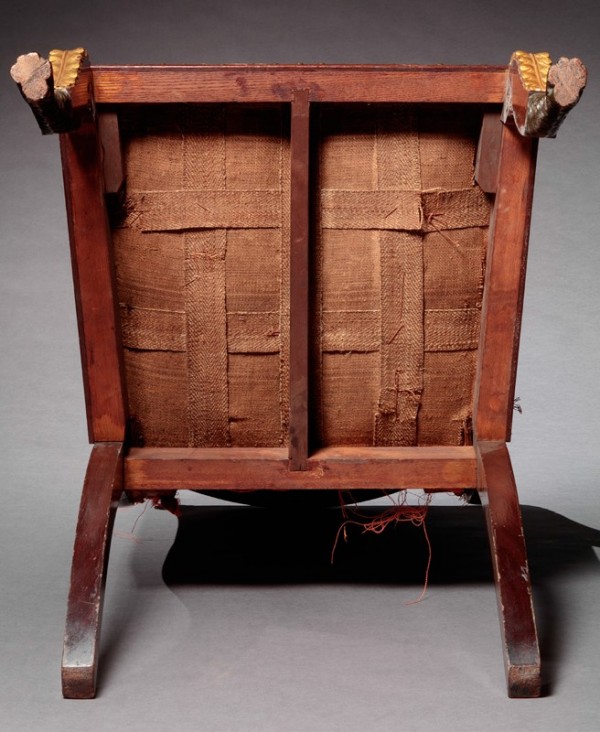
Underside of armchair “P” showing medial brace and corner blocks.
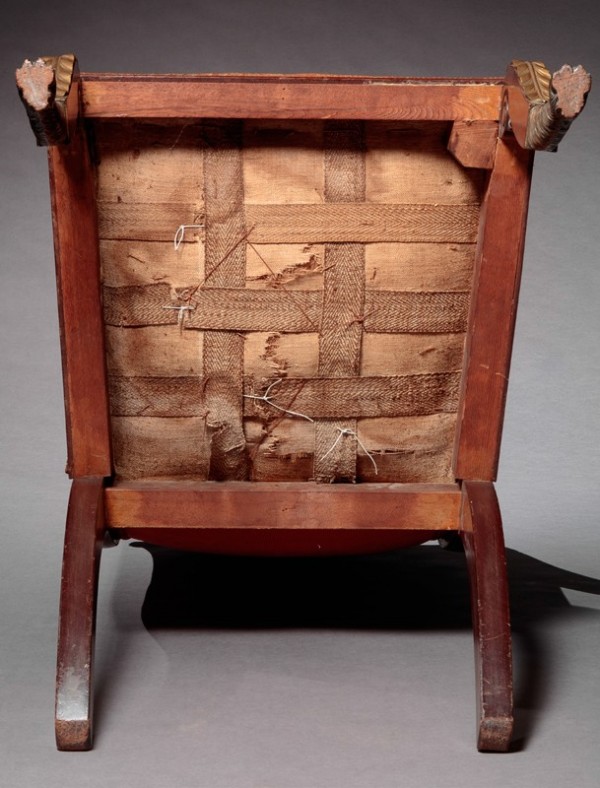
Underside of armchair “F” showing no medial brace and one remaining corner block.
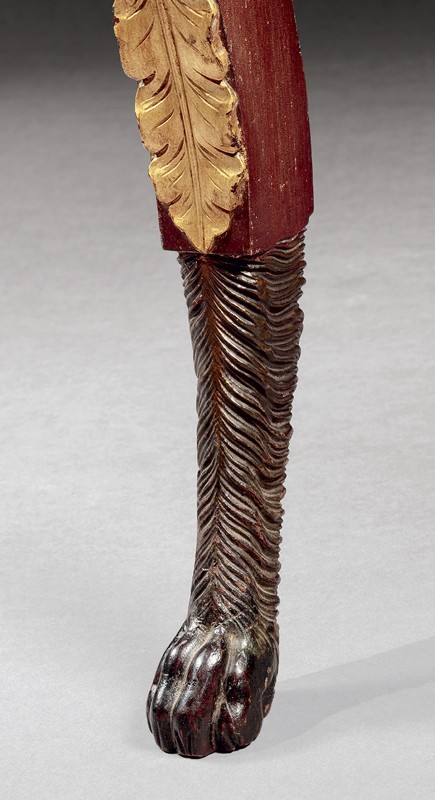
Leg detail of medial armchair “P”.
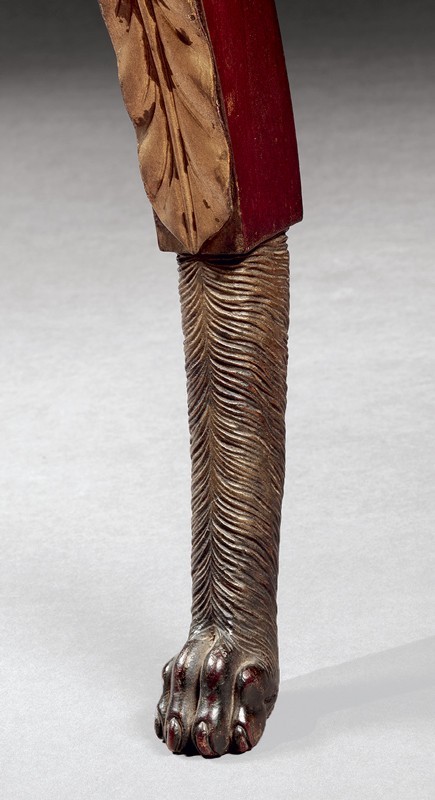
Leg detail of no-medial armchair “F”.
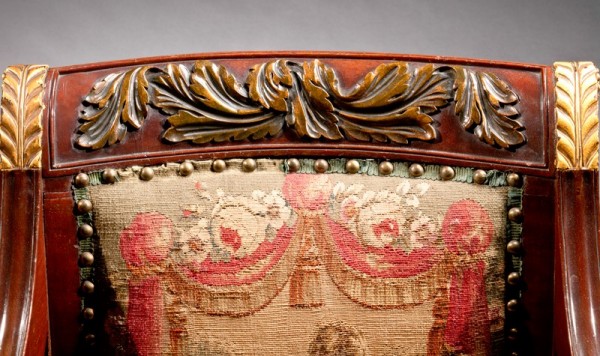
Crest rail of medial armchair “K”.

Crest rail of no-medial armchair “A”.
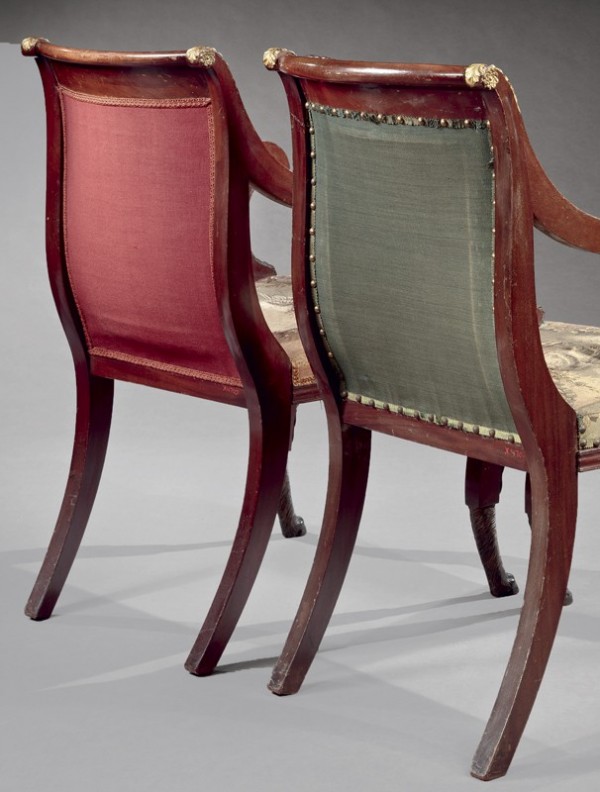
Backs of medial and no-medial armchairs “I” (left) and “D” (right).

X-ray showing the back construction of no-medial armchair “A”.
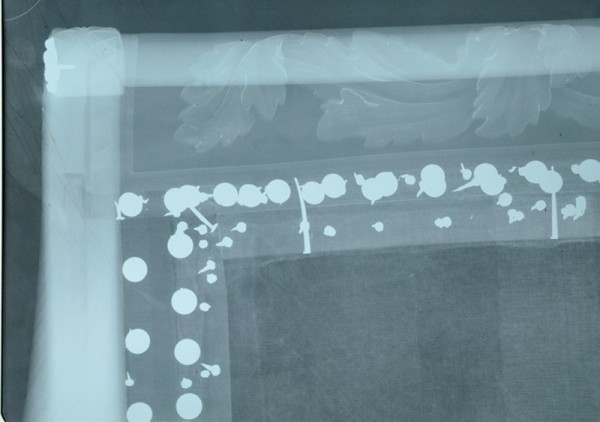
X-ray showing the back construction of medial armchair “P”.

Charles Honoré Lannuier (1779–1819), pier table, New York City, 1815–1819. Rosewood with white pine, tulip poplar, and ash. H. 37", W. 54", D. 22 1/2". (Courtesy, Historic Deerfield, Inc.; photo, Amanda Merullo.)
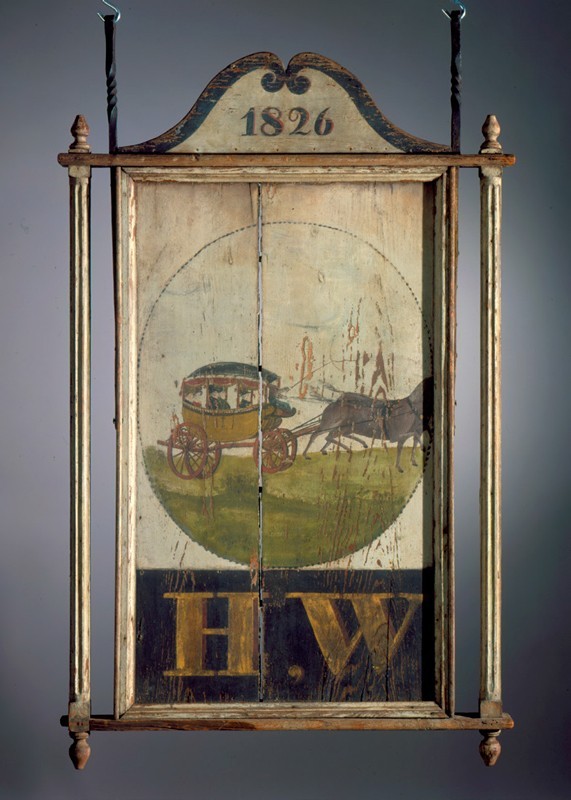
Tavern sign for the Williams Inn of Centerbrook, Connecticut, 1803. Pine and maple. 54 3/4" x 35 1/8". (Courtesy, Connecticut Historical Society.)
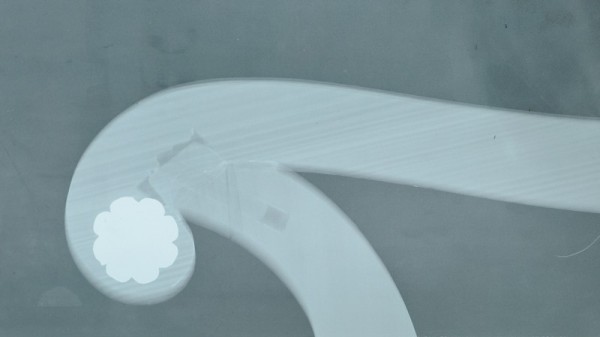
X-ray of a broken arm support showing an internal dowel on no-medial armchair “F”.
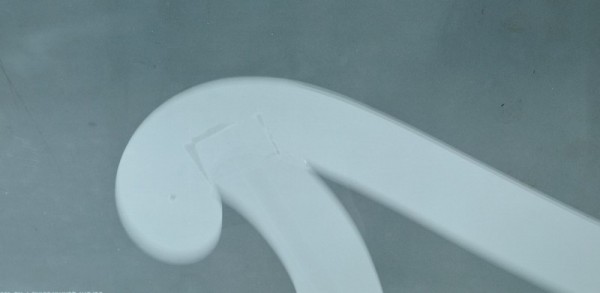
X-ray showing the long original dowel in an arm support on medial armchair “P”.

Detail showing a dowel with tenon notch. (Photo, Philip Zimmerman.)
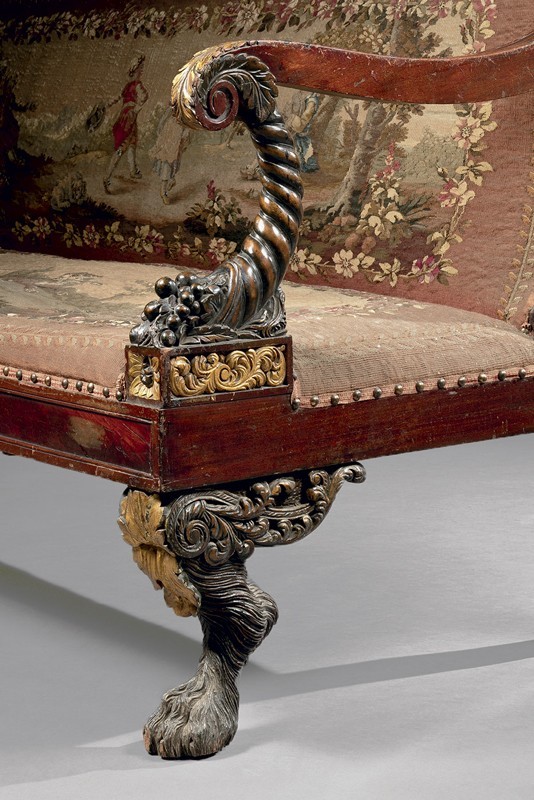
Detail of the red sofa showing a leg and arm support.
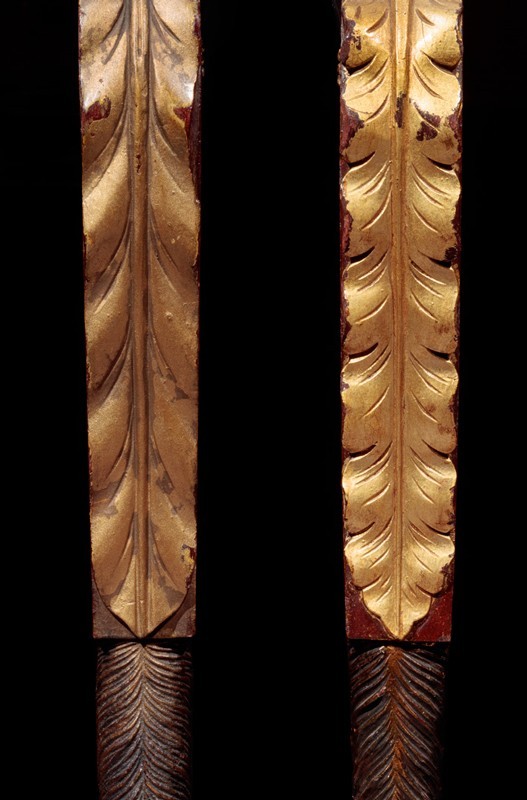
Comparative detail showing the leaf-carving on the front legs of no-medial armchair “F” (left) and medial armchair “P” (right).
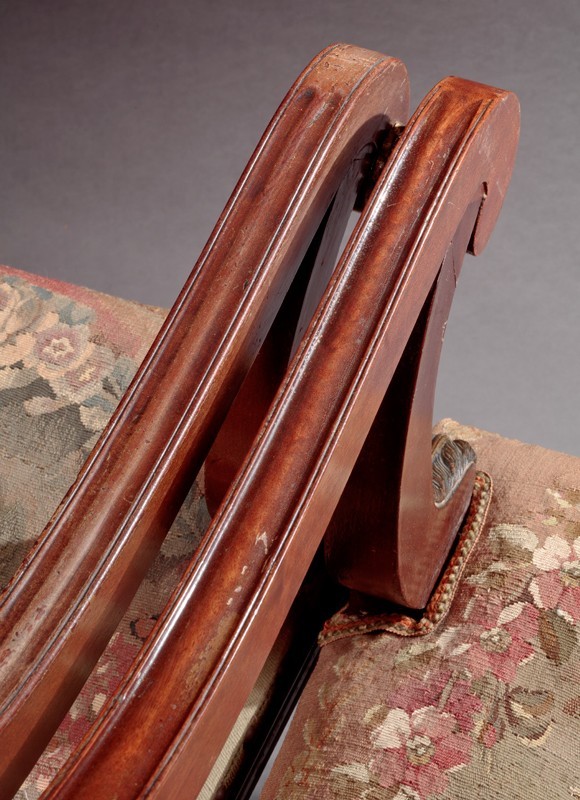
Comparative detail showing the arms of a medial (left) armchair and a no-medial (right) armchair.
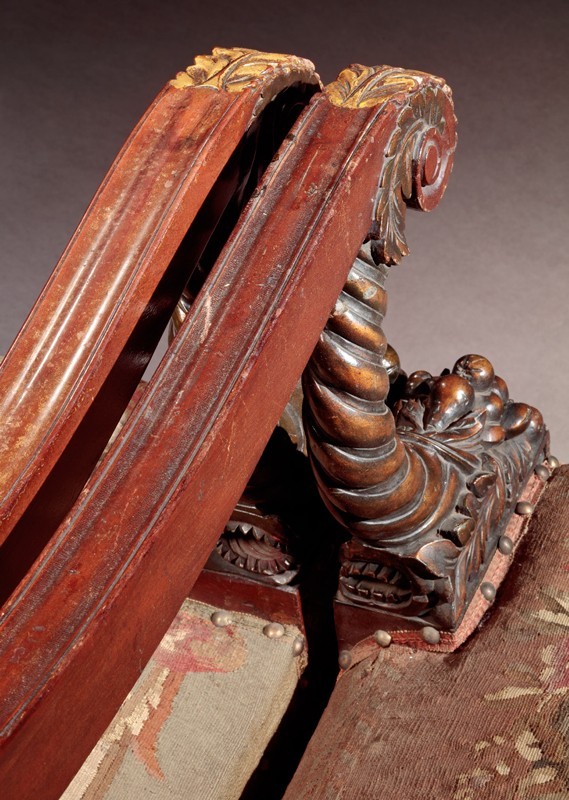
Comparative detail showing the arms of the green (left) and red (right) sofas.

Detail of the arm support of the red sofa.
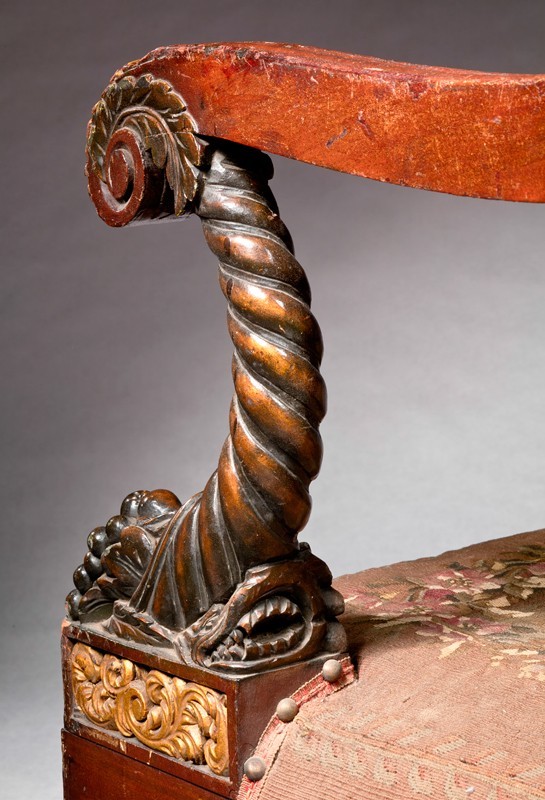
Detail showing the back of the arm support of the red sofa.
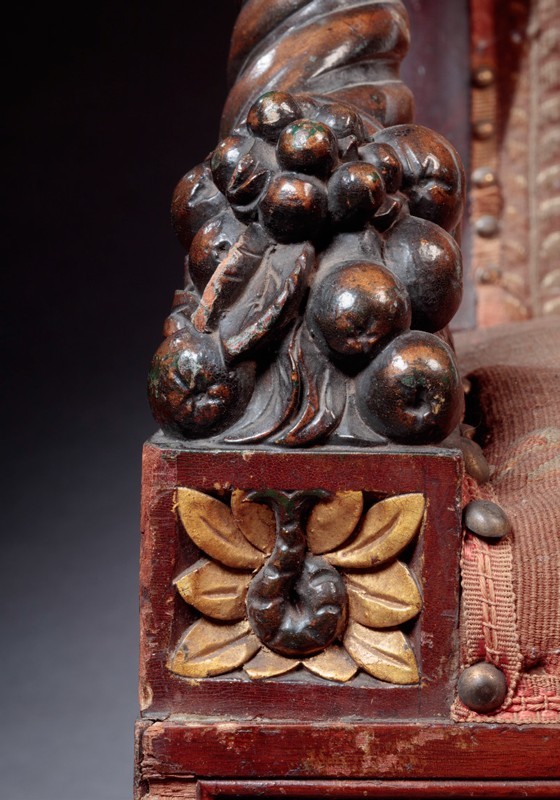
Detail showing the sea monster tail inside the rosette of the arm support base of the red sofa.

Detail showing the arm support of the green sofa.

Green tapestry back and seat from medial armchair “K”.

Red tapestry back of armchair “O” with a composition similar to that of armchair “L”, illustrated in fig. 40.

Green tapestry back of armchair “L” with a composition similar to that of armchair “O” illustrated in fig. 39.

Detail of the green sofa showing the wide veneer border between the upholstered panel and the rear stile.

Detail of the red sofa showing the narrow veneer border between the upholstered panel and the rear stile.
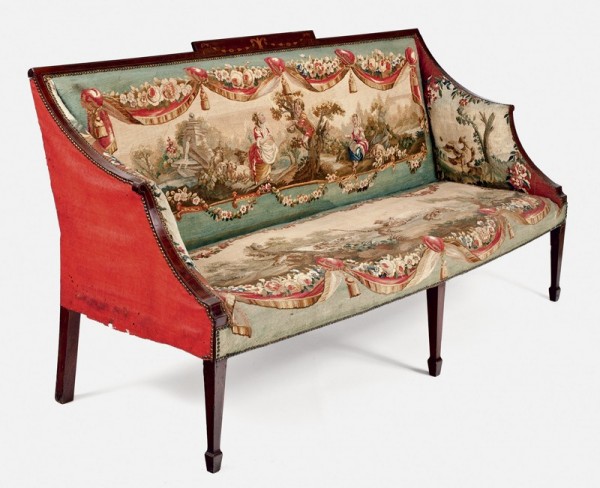
Sofa, New York City, 1805–1810. Mahogany and light and dark wood inlays and stringing with beech, ash, and other unidentified woods. H. 39", W. 73 1/2", D. 26". (Courtesy, New‑York Historical Society; photo, Glenn Castellano.)
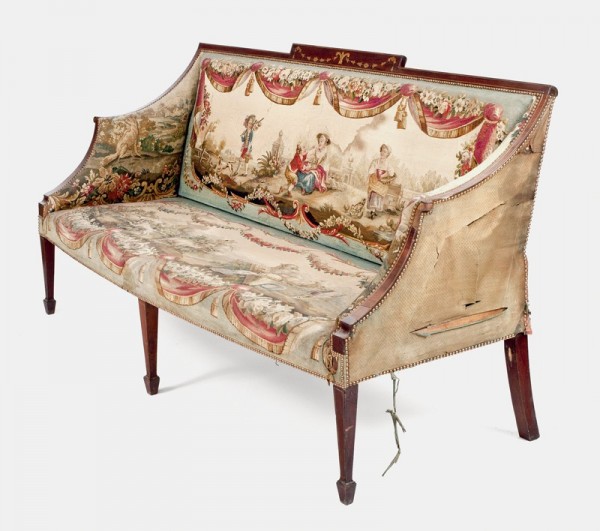
Sofa, New York City, 1805–1810. Mahogany and light and dark wood inlays and stringing with ash, oak, cherry, tulip poplar, and white pine. H. 40", W. 73 1/2", D. 25 1/2". (Courtesy, New-York Historical Society; photo, Glenn Castellano.)
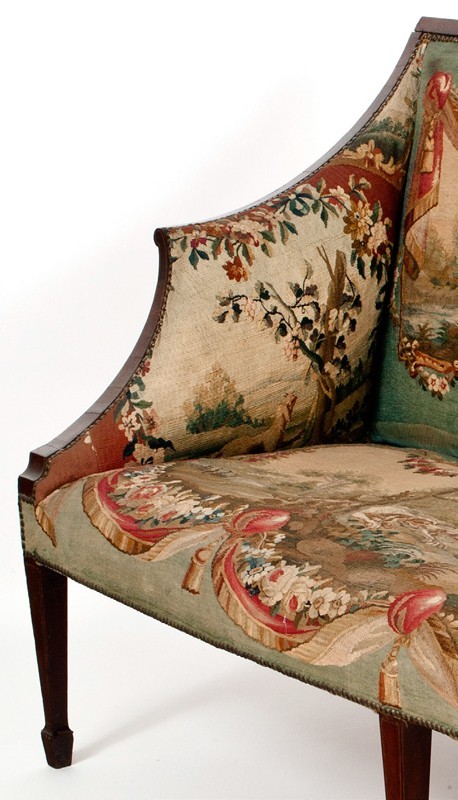
Detail showing patched-in tapestry inside the arm of the sofa illustrated in fig. 43.

Detail showing tapes at the arm supports of a chair from each group (armchairs “D” [left] and “L” [right]).
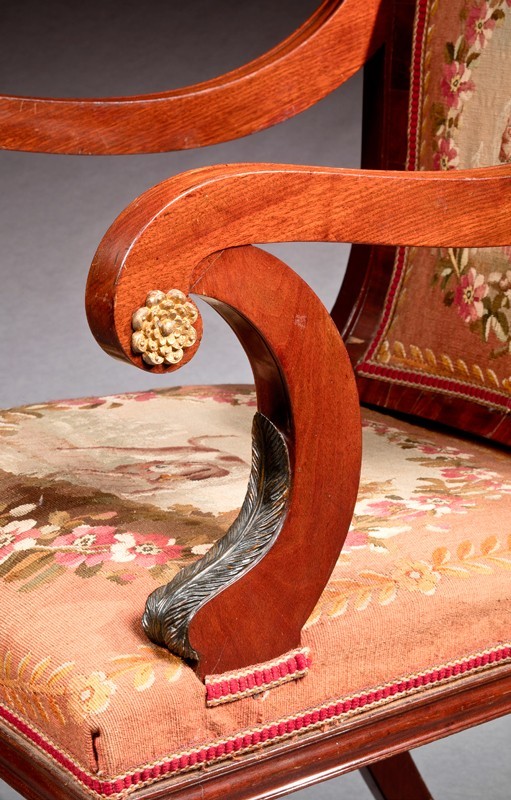
Detail of armchair “A” showing deep red, modern tapes.

Detail showing the foundation upholstery of medial armchair “P”.
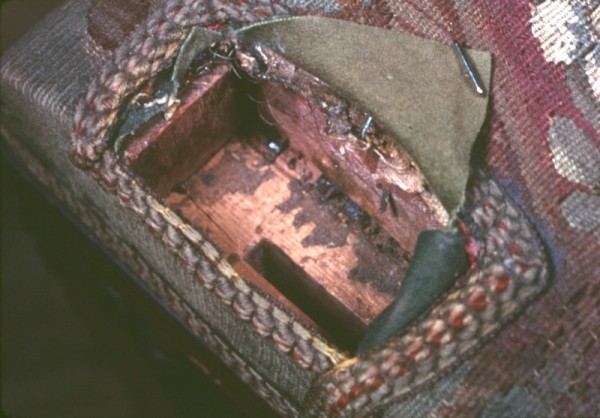
Detail showing the arm support mortise and upholstery blocks of medial armchair “J”. (Photo, Philip Zimmerman.)
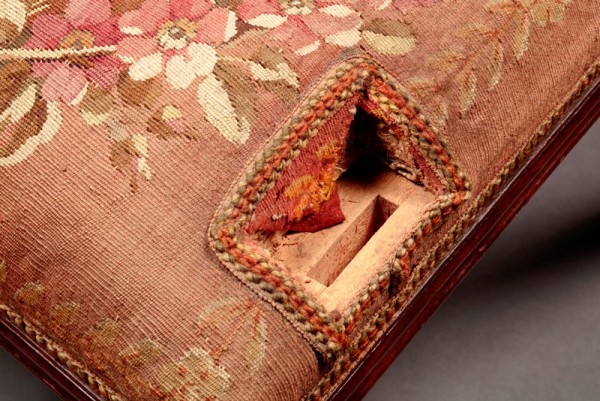
Detail showing the arm support mortise and grass seat roll on no-medial armchair “D”.
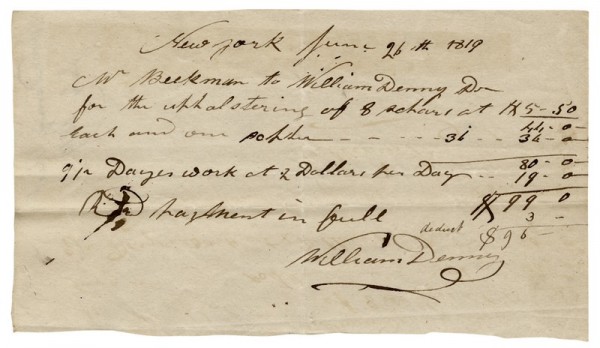
William Denny to James Beekman, invoice dated June 26, 1819. (Courtesy, New-York Historical Society.)
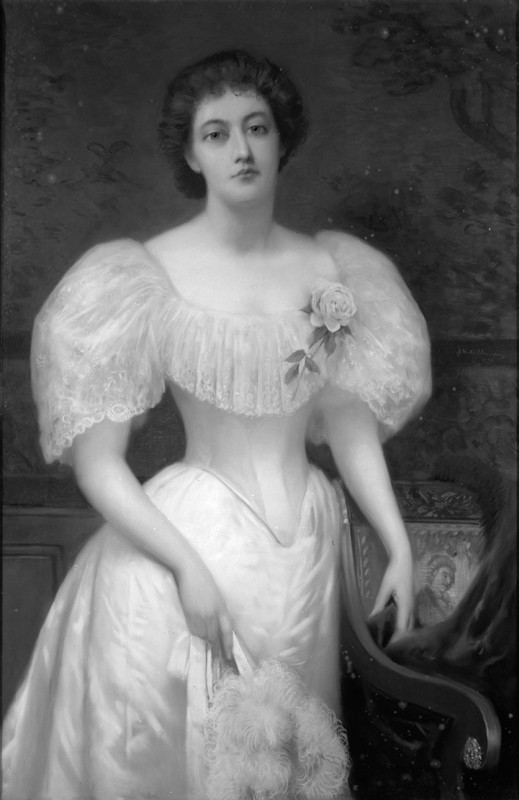
Unidentified artist, portrait of Cornelia Augusta Beekman, ca. 1897, oil on canvas. 48" x 31 1/2" (sight). (Privately owned; photo courtesy New-York Historical Society.)
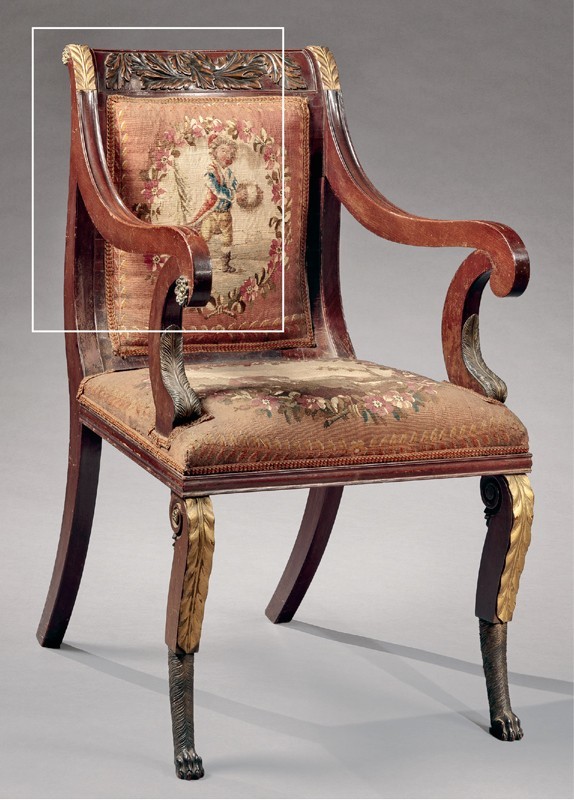
Armchair “F”, with highlighted detail showing the area depicted in the portrait illustrated in fig. 52.

View of the red sofa showing the open back.
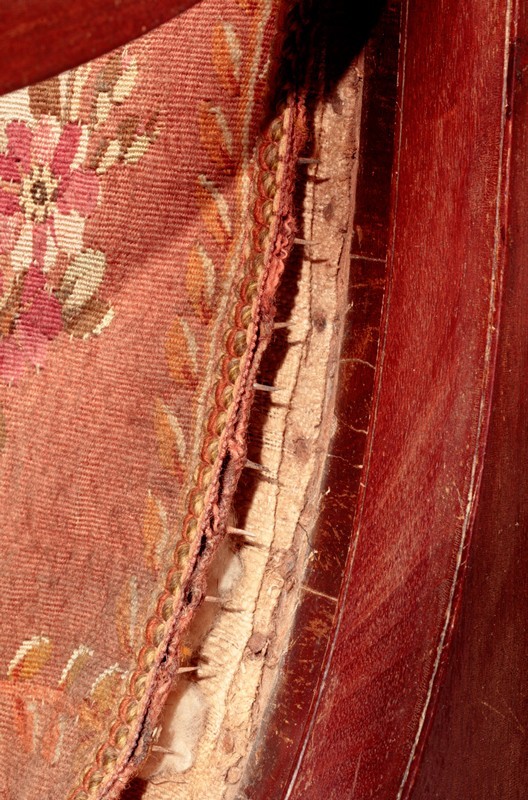
Detail of the exposed back upholstery and tacks of armchair “F” with original trim (fig. 53). The loosened tacks were kept in place.
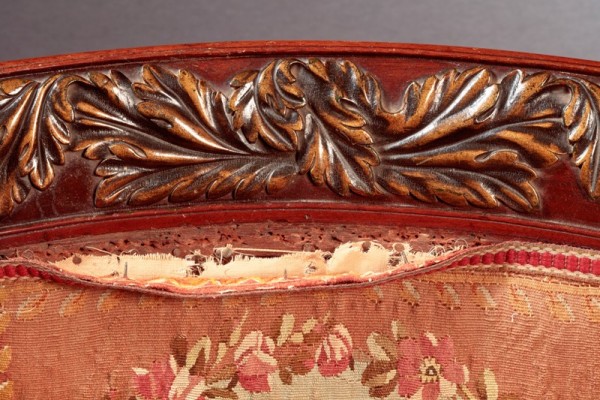
Detail of the exposed upholstery and multiple tack holes in the back of armchair “A” with replaced trim.
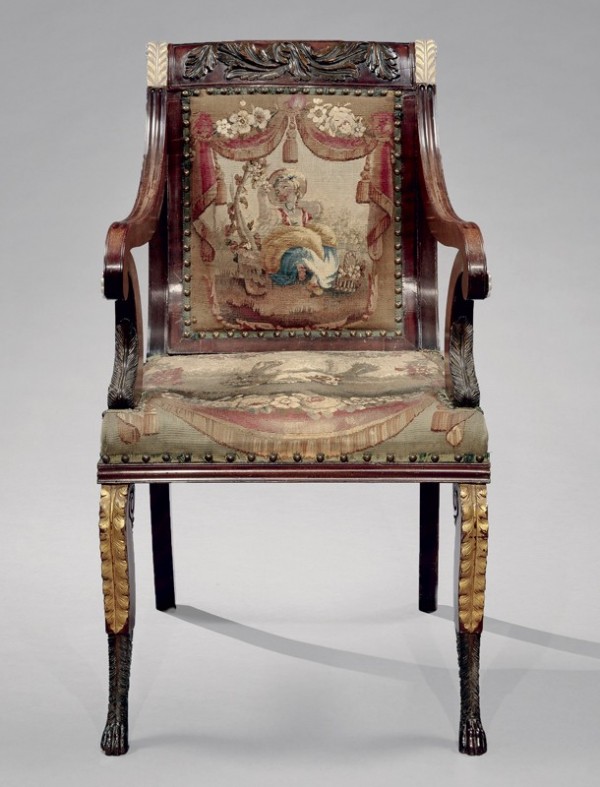
Medial armchair “G” with green upholstery.

No-medial armchair “A” with red upholstery.
